Results 6,601 to 6,610 of 12094
Thread: Anandtech News
-
01-05-17, 05:46 AM #6601
Anandtech: Coolpad Announces Conjr: Affordable 5-inch Smartphone
Today at CES 2017, Coolpad announced a new low-cost smartphone. The Conjr has a 5-inch 720p IPS LCD display and an aluminum unibody construction. A capacitive fingerprint scanner is located on the back along with a mono speaker that looks like it could be muffled when sitting on a table.
The front is covered edge to edge with glass. It has capacitive navigation buttons below the 5-inch screen, which helps free up some screen space for content. There’s a notification light in the upper bezel, along with an 8MP selfie camera with a dedicated LED flash, an interesting feature at this price point.
A single-piece volume rocker is located near the top on the left edge, slightly offset from the power button that sits near the midpoint on the right edge. There’s a 3.5mm headphone jack on the top and a microUSB 2.0 port on the bottom.
Inside is a MediaTek MT6735CP SoC. With only four Cortex-A53 cores running at a lowly 1GHz, the Conjr will not be a top performer, even compared to other low-cost phones. The Mali-T720MP2 GPU is not well suited for 3D gaming either, but should be enough for simple 2D games.Coolpad Conjr SoC MediaTek MT6735CP
4x Cortex-A53 @ 1.0GHz
Mali-T720MP2 @ 450MHzRAM 3GB LPDDR3-1066 NAND 16GB + microSD Display 5.0-inch 1280x720 IPS LCD Dimensions 143 x 72 x 8.66 mm
148 gramsModem MediaTek (Integrated)
2G / 3G / 4G LTE (Category 4)Network FDD-LTE (2 / 4 / 5 / 7 / 12)
WCDMA (1 / 2 / 4 / 5)
GSM (850 / 900 / 1800 / 1900)SIM Size 2x NanoSIM Front Camera 8MP, f/2.2, LED flash Rear Camera 13MP, f/2.2, AF, OIS, LED flash Battery 2500 mAh
non-replaceableConnectivity 802.11b/g/n, BT 4.0, microUSB 2.0 Launch OS Android 6.0 with Cool UI 8.0
It does have 3GB of LPDDR3 memory, which should help with multitasking, but internal storage is only 16GB. Thankfully, the Conjr does have a microSD slot for storage expansion.
The integrated MediaTek Category 4 LTE modem will work on US GSM carriers, including AT&T, T-Mobile, and US Cellular but not Sprint or Verizon.
Coolpad did not announce exact pricing or availability, but did say the Conjr, which comes in either gold or gray colors, will cost less than $200 USD.
More...
-
01-05-17, 08:34 AM #6602
Anandtech: Razer Announces Project Ariana: Chroma Lighting Comes To The Room, And To
Razer’s Chroma branding has signified a rich, multi-colored lighting ability for many of Razer’s products, whether they be mice, headphones, laptops, keyboards, and more. Chroma offers the user to configure the color scheme with up to 16.8 million colors, in a variety of zones, or even per-key lighting schemes, all controlled through the Razer Synapse software. With the addition of Chroma supported apps and games, lighting can be controlled from within the program as well, so, for instance, if you are running low on ammo, your keyboard can flash to let you know.
Chroma has been one of Razer’s strongest assets in its accessory lineup, and last year they even brought their per-key RGB backlighting to the Razer Blade Stealth Ultrabook, then later to their Razer Blade, and now the Razer Blade Pro. At the time, the Stealth was the first notebook to offer per-key RGB backlighting, and in practice it’s much nicer to use than something with zoned lighting.
At CES 2017, Razer is announcing that they are now bringing Chroma lighting to the entire room, with Project Ariana. This is a concept project at the moment, but the idea is pretty interesting, and it can possibly bring even more immersion to the gamer.
At the center of Project Ariana is a high-definition video projector, which features an ultra-wide fish eye lens for maximum room coverage. It features a pair of 3D depth sensing cameras in order to calibrate itself to the room it is in, to provide the best projection for any room.
When in the game, the projector can be used to augment the room lighting to bring a deeper experience, and you can imagine lightning or gunfire flashes around the room bringing a whole new complexity to the involvement of the gamer. As a video projector, it can also be used for exact that as well.
It’s certainly an interesting concept, but likely needs to be seen to be experienced fully, and Razer will be demoing Project Ariana this week at CES, so we hope to get some hands-on time with it.
In addition to the expansion of Chroma to the room, Razer is also expanding Chroma support to third parties. Razer has sold over five million Chroma devices, and they have worked with developers to add Chroma app support to top games like Overwatch, and more, so it makes a lot of sense for them to bring other device manufacturers on-board. With one larger ecosystem, they would hope to get even more developer support, and from the third-party point of view, they will have a turn-key solution without having to develop an entirely new one – at a licensing cost of course.
Razer has announced they have several hardware partners already lined up to support Chroma on their own products, including Lenovo, NZXT, Antec, Lian Li, Wicked Lasers, and Nanoleaf. Several of these companies have already worked with Razer in the past on devices, so this extension of cooperation isn’t too surprising.
Project Ariana is currently in the prototype phase, so it will be a little while before Razer is ready for production, and therefore pricing is a long time away yet, but this seems like a natural extension to the Chroma ecosystem they’ve already created, and could bring a lot of “wow” factor to a gaming room.
Source: Razer
More...
-
01-05-17, 08:34 AM #6603
Anandtech: Razer Reveals Their Triple Monitor Gaming Laptop Concept: Project Valerie
What do you do after you’ve launched one of the thinnest and lightest gaming laptops featuring the new NVIDIA GTX 1080 GPU? Razer found itself in this situation after announcing the long anticipated update to their large gaming laptop last year, with the launch of the Razer Blade Pro. At 7.8 lbs and 0.88 inches thick, it’s one of the most interesting gaming laptops announced last year, and our full review is coming soon. Meanwhile, Razer decided to take their Razer Blade Pro, and add two more displays to it.
Today Razer is announcing Project Valerie, which is the world’s first portable laptop with three built-in displays. To do this, they didn’t make the main display smaller either. All three displays are 17.3-inch UHD (3840x2160) IGZO panels with 100% Adobe RGB coverage. I’ll leave the discussion on why 100% Adobe RGB isn’t a great experience for another day, but with the three displays, you get a 11,520 x 2160 resolution experience with Project Valerie. Since this is going to be a struggle to drive even with the best GPU, all three displays also support G-SYNC. The displays themselves have a motorized hinge to put them into position, and they slide back and slide under the main panel when stowed. It’s an interesting feat of engineering.
Just to be clear, this is currently just a prototype, but yesterday at CES Ryan Smith was able to visit Razer and check out this project. Razer has a couple of prototypes - ranging from proof-of-concept designs to the final industrial design - and not all of them have the movable displays, but they were functioning prototypes. One of the proof-of-concept prototypes was even playing Battlefield 1 in a full 180° NVIDIA Surround View gaming setup.
Razer is building this system as a mobile workhorse, and by starting with the Razer Blade Pro, they already have a thin and light system for the amount of compute available. Final specifications are not complete yet for the dimensions and weight, but Project Valerie with its triple monitors will be in the same aluminum CNC chassis format as the other Razer laptops, with a thickness of just 1.5-inches, and a final weight between 10 and 12 pounds, which is really not much different than many other 17.3-inch gaming notebooks.
This would be excellent for an office user, where the extra display real estate would make multitasking much easier, and any of us who leverage multiple monitors regularly, like I do, can see this being an amazingly portable office machine too. One of the things I hate most about using a laptop on the road is that it only has a single display, making it difficult to get work done. Often I have to resort to crazy things like bringing multiple devices on a road trip for proper workflow, as seen below.
The basis of Project Valerie is the Razer Blade Pro, with a quad-core i7 mobile CPU, NVIDIA GTX 1080, and plenty of RAM, at least for the prototypes, and this may change later. For outright gaming, the single GTX 1080 is going to struggle with this kind of resolution of course, but if and when this comes to production we’ll see what Razer can do about that. It also features the ultra-low-profile mechanical keyboard from the Pro, with per-key RGB backlighting and Chroma support.
Although this is just a concept, it’s a very interesting concept, and if properly executed it could be a very exciting machine. For the time being, it is being shown at CES as a working prototype, which means it’s possible it may be put into production. Time will tell.
Gallery: Razer Project Valerie

Source: Razer
More...
-
01-05-17, 10:09 AM #6604
Anandtech: HDMI 2.1 Announced: Supports 10Kp120, Dynamic HDR, New Color Spaces, New 4
The HDMI Forum on Wednesday announced key specifications of the HDMI 2.1 standard, which will be published in the second quarter. The new standard will increase link bandwidth to 48 Gbps and will enable support for up to 10K resolutions without compression, new color spaces with up to 16 bits per component, dynamic HDR, variable refresh rates for gaming applications as well as new audio formats
The most important feature that the HDMI 2.1 specification brings is massively increased bandwidth over predecessors. That additional bandwidth (48 Gbps over 18 Gbps, a bit more than what a USB-C cable is rated for) will enable longer-term evolution of displays and TVs, but will require the industry to adopt the new 48G cable, which will keep using the existing connectors (Type A, C and D) and will retain backwards compatibility with existing equipment (which probably means 8b/10b encoding and effective bandwidth of around 38 Gbps). The standard-length 48G cables (up to two meters) will use copper wires, but it remains to be seen what happens to long cables. It is noteworthy that while some of the new features that the HDMI 2.1 spec brings to the table require the new cable, others do not. As a result, some of the new features might be supported on some devices, whereas others might be not.
The increased bandwidth of HDMI 2.1’s 48G cables will enable support of new UHD resolutions, including 4Kp120, 8Kp100/120, 10Kp100/120, and increased frame rates. It is no less important that increased bandwidth will enable support of the latest and upcoming color spaces, such as BT.2020 (Rec. 2020) with 10, 12, or even more advanced with 16 bits per color component and without compression. HDMI Forum does not say it explicitly, but the version 2.1 of their standard will also likely support the BT.2100 (Rec. 2100), which has a number of important enhancements to the BT.2020 when it comes to HDR. While HDMI 2.0 already supports BT.2020 and HDMI 2.0b adds support for HDR10 (through support for Hybrid Log-Gamma (HLG)), it only can transmit 10 and 12 bits per sample at 4Kp60 resolution. To support HDR at 8K, one will need HDMI 2.1.
Moreover, the new HDMI 2.1 standard brings support for dynamic HDR metadata, enabling content makers to control levels of color, contrast and brightness on a frame-by-frame basis. The important part here is that dynamic HDR will not require the new 48G cable to handle video in up to 4Kp60 resolution and thus manufacturers may add support for dynamic HDR even using a firmware update. That is not going to work for a lot of existing equipment because display pipelines work differently and many TVs are incapable of anything beyond HDR10. Moreover, recorded media (i.e., Ultra HD Blu-ray) does not currently support dynamic HDR (and when the next-gen standard emerges, it will bring a lot of other features, including a new content protection algorithm), which means that two primary sources for dynamic HDR content will be games and streaming media (which is an interesting thing, given the focus of AMD’s recently announced FreeSync 2 technology). It is also noteworthy that HDMI Forum does not currently mention particular HDR implementations, but only says that the HDMI 2.1 standard will support a variety of them.Key HDMI 2.1 Improvements Over HDMI 2.0/2.0a HDMI 2.0 HDMI 2.1 Physical Bandwidth 18 Gbps (with High Speed cable) 18 Gbps (with High Speed cable)
48 Gbps (with 48G cable)Maximum Resolution (2D) 4096×2160 at 60 Hz
7680×4320 at 30 Hz4096×2160 at 100/120 Hz
5120×2880 at 100/120 Hz
7680×4320 at 100/120 Hz
10K at 100/120 HzMaximum Color Depth 48 bits (at 4K) 48 bits (at 8K+) HDR Static Dynamic Game Mode Variable Refresh Rate No Yes Object-Based Audio (eARC) No Yes
In fact, dynamic HDR will not be the only feature of the HDMI 2.1 specifications applicable to games. Among other things, the new standard will support the game mode variable refresh rate (GM VRR). Nowadays, AMD already supports FreeSync-over-HDMI using a custom mode and with the HDMI 2.1 everything gets a little easier. The HDMI 2.1 GM VRR will work for 4Kp120 and 8Kp60 resolutions with the new 48G cable, but for lower resolutions/refresh rates, the HDMI 1.4 cable will be enough. We do not known whether current-gen sources (i.e., GPUs and consoles) could be updated to support the HDMI 2.1 GM VRR, but the upcoming graphics processors are going to support the tech simply because they are going to support the HDMI 2.1 in general. When it comes to sinks (i.e., TVs, displays), it is unclear whether this is a full-on requirement - if all sinks will need to support VRR - but it is likely that they will support it in their next generations as well. Meanwhile, support of GM VRR by HDMI 2.1 also means that variable refresh rates may be coming to next-generation consoles (whenever they come out), finally making the feature a default one for gaming.
The final capability of the HDMI 2.1 specification is the eARC — support for object-based many-channel audio formats. The HDMI Forum did not mention specific brands, but Dolby Atmos and DTS:X seem to be the most likely candidates to support.
The HDMI 2.1 specification brings a number of long-awaited features to the table, some of which may show up in shipping products sooner, the other will become available years from now. HDMI Forum plans to publish the final standard in Q2 2017 and release the HDMI 2.1 compliance test specification in Q2 or even Q3 2017. That said, do not expect any features of the new spec to become available earlier than in the second half of this year (2018 seems more likely). Meanwhile, from licensing standpoint, any company with a license for the HDMI 2.0 spec can have access to the HDMI 2.1 blueprints.
More...
-
01-05-17, 02:27 PM #6605
Anandtech: ECS Expands LIVA mini-PC Family with Z-Series at CES 2017
ECS has announced a number of ultra-compact form-factor (UCFF) PCs in the LIVA family at CES 2017. These build upon the success enjoyed by the LIVA brand over the last couple of years. The LIVA Z family being demonstrated at the show has three members - the Z and ZE are based on the Apollo Lake SoC platform, while the Z Plus is based on Kaby Lake-U. Details of the LIVA Z became public in November, and, today, we got the chance to see that, as well as the ZE and Z Plus in action.
The specifications of the three PCs are summarized in the table below. The main differences to note between the Z and ZE models are the availability of four COM ports (RS232) and a 2.5" drive slot in the latter. The Z Plus is a completely different platform.
Traditionally, the LIVA series PCs have had one of the smallest footprints of all the mini-PCs belonging to the UCFF category. With the new Z-series LIVAs, ECS seems to have gone in for slightly larger PCBs (115 x 111mm, as compared to 101.6 x 101.6mm for the NUCs). Fortunately, the larger footprint has enabled ECS to put in dual LAN ports in all the models.LIVA Z Family Specifications LIVA Z LIVA ZE LIVA Z PLUS CPU Intel Apollo Lake SoC
(Intel Celeron Processor N3350 / N3450 / N4200)
(6W TDP)Intel Kaby Lake-U
(Intel Core i3-7100U / i5-7200U / i7-7500U)
(15W TDP)PCH Integrated Intel Sunrise Point-LP for Kaby Lake-U Graphics Intel HD Graphics 500 / 505 Intel HD Graphics 620 Memory 2x DDR3L SO-DIMM Slots 2x DDR4 SO-DIMM Slots Storage 1x eMMC 32G/64G
1x M.2 2242 SATA III1x eMMC 32G/64G
1x M.2 2242 SATA III
1x 2.5" SATA III1x eMMC 32G/64G
1x M.2 2242 SATA III / PCIeWi-Fi Intel AC3165 1x1 802.11ac + BT 4.0 Intel AC3165 1x1 802.11ac + BT 4.0 / Intel AC8260 2x2 802.11ac + BT 4.0 Ethernet 2x Gigabit LAN with RJ-45
(Realtek RTL8111H)2x Gigabit LAN with RJ-45
(1x Intel I-219 + 1x Realtek RTL8111H)Display Outputs 1 × HDMI (TBD on 1.4b vs. 2.0 and HDCP 2.2 support)
1 × mDP 1.2Audio 1x Combo Jack (Realtek ALC283) 1x Combo Jack (Realtek ALC283)
1x Digital Microphone InputUSB 3 × USB 3.0 Type-A (5 Gbps)
1 × USB 3.0 Type-C (5 Gbps)Dimensions 117 mm × 128 mm × 33 mm 117 mm × 128 mm × 51 mm 117 mm x 128 mm x 33 mm PSU External - 19V @ 2.1A
(40 W)External - 19V @ 3.42A
(65 W)VESA Mounts 75 mm / 100 mm, one bracket included OS Microsoft Windows 10 Linux-based OS (UEFI mode)
Microsoft Windows 10Microsoft Windows 10
The Z Plus needs a 65W adapter due to the 15W Kaby Lake-U processor. The ZE, despite sharing the same platform as the Z for the most part, needs more power for the 2.5" drive.
ECS folks at the suite were not able to confirm whether the Z-Plus has a LSPCon for HDMI 2.0 / 4Kp60 output and HDCP 2.2 support. This is essential for using the Z Plus as a 4K OTT streaming box with 4K Netflix support. We should be getting confirmation sometime next week, and we eventually plan to post a hands-on review when the unit releases towards the end of this quarter.
On the other hand, the four COM ports in the LIVA ZE as well as its fanless nature should lend itself to industrial use-cases.
Gallery: ECS LIVA Z - Chassis Design & I/O



Gallery: ECS LIVA Z Plus Chassis Design & I/O



The industrial design and I/O organization for the LIVA Z and LIVA Z Plus are quite similar, as can be seen in the above galleries. The ZE model is thicker, as it has to accommodate four extra COM ports as well as a 2.5" drive slot inside the chassis.
Gallery: ECS LIVA ZE - Chassis Design & I/O




In addition, ECS also announced the LIVA XE, an upgrade over the existing LIVA x2 (which uses an Intel Celeron N3050 SoC). The LIVA XE uses a Celeron J3060, which has a higher burst clock. The form-factor and I/Os are similar, except that the XE dispenses with the digital microphone input.
Gallery: ECS at CES 2017
ECS also showed off some of their latest motherboards in the suite. These included the B350AM4-M uATX board with the AMD B350 chipset, and a couple of Z270 boards ith Intel Optane support.
More...
-
01-05-17, 04:17 PM #6606
Anandtech: D-Link's Covr Whole-Home Networking Solutions - Wi-Fi SON with Wi-Fi and H
D-Link is launching a few IP cameras and a couple of Wi-Fi home networking solutions at CES 2017.
More relevant to our recent coverage are the two new whole-home Wi-Fi solutions being launched under the Covr tag. Mesh Wi-Fi's sudden market traction, thanks to offerings from startups such as eero and Luma, has forced incumbent vendors to re-package their separate router and range extender product lines with tighter integration in terms of both hardware design and firmware features. Qulacomm's Wi-Fi SON (Self-Organizing Networks) firmware features have definitely lent a helping hand to vendors to get started quickly with such systems.
D-Link's Covr systems come in two flavors - one with a pure Wi-Fi backhaul, and the other with a powerline backhaul using HomePlug AV2 technology. The firmware features for the whole-home Wi-Fi system are based upon Qualcomm's Wi-Fi SON in both versions. We have already evaluated different types of backhauls for extending Wi-Fi reach. In our testing, a dedicated 4x4 802.11ac Wi-Fi backhaul was able to perform better than both HomePlug AV2 (AV2 2000) and G.hn powerline systems. However, performance seen by end users may vary widely based on the type of construction of the home as well as the Wi-Fi backhaul characteristics and powerline chipsets used.
The pure Wi-Fi backhaul version is the Covr Wi-Fi System (DKT-883), while the HomePlug backhaul version is the Covr Powerline Wi-Fi System (DHP-W732AV).
Covr with Wi-Fi Backhaul: DKT-883
Typical mesh Wi-Fi or whole-home Wi-Fi systems rely upon multiple units sharing very similar hardware. On the other hand, D-Link has adopted the more traditional approach with an AC2600 router (based on the Qualcomm Atheros 8065 SoC) - the DIR-883 Dual-Band MU-MIMO Wi-Fi Router with 4x4 802.11ac (1733 Mbps in the single 5 GHz band and 800 Mbps in the single 2.4 GHz band) - at the heart of the system. The DAP-1655 AC1300 Gigabit Wi-Fi Extender (2x2 802.11ac with 867 Mbps in the 5 GHz band and 400 Mbps in the 2.4 GHz band) is the other part of the system.
Note that there is no dedicated Wi-Fi backhaul channel - bandwidth is shared between client devices and the router-extender communication link. Users sensitive to performance need to keep this mind. The selling point, therefore, boils down to the Wi-Fi SON features of smart steering, load balancing across the 5 GHz and 2.4 GHz bands, and easy set up.
Covr with Powerline Backhaul: DHP-W732AV
The DHP-W732AV solution is meant to extend Wi-Fi reach with an already existing router in the network. HomePlug AV2 1200 is used as the backhaul. The kit consists of two DHP-W730AV adapters. These adapters are 2x2 802.11ac solutions with Qualcomm Atheros chipsets for both Wi-Fi and powerline communication. While the PLC chipset it AV2 1200-class, the Wi-Fi is AC1300 (867 Mbps on 5 GHz + 400 Mbps in the 2.4 GHz band)
Each kit member also has three gigabit ports to service wired clients at their placement locations. Note that the kit doesn't need a wired connection to the main router (typical of many range extenders that use PLC backbone). Instead, since both members of the kit are Wi-Fi-enabled, one is used to connect to the Wi-Fi network of the main router, while the second one can be connected to any power outlet to extend the Wi-Fi reach. The key here is again the use of Wi-Fi SON to make the whole experience seamless when handing off clients between the Wi-Fi networks of the PLC kits and the main router's Wi-Fi network.
The DKT-883 and DHP-W732AV will both become available in Q2 2017 for $300 and $199 respectively.
In other CES news, D-Link also launched their first Apple HomeKit-certified IP camera, the Omna 1080 Cam HD (DSH-C310), and a host of other budget IP cameras. A welcome announcement was the integration of the functionalities present in multiple D-Link apps into one unified mydlink Home App for all of the company's IP cameras and smart home devices.
Gallery: D-Link's Covr Whole-Home Networking Solutions - Wi-Fi SON with Wi-Fi and HomePlug Backhauls
More...
-
01-05-17, 04:17 PM #6607
Anandtech: CES 2017: Xiaomi (Not) Live Blog
I'm here at Xiaomi's “A Glimpse Into The Future” CES 2017 press conference, where the company will be announcing at least one new product.
This is Xiaomi’s first time presenting at CES.
The fairly small ballroom is packed and apparently RF shielded.
I don't have any cellular service in here, and Xiaomi does not have Wi-Fi available.
So I'll be posting this "live" blog in one chunk after the event once I'm connected to the rest of the world again.
Looks like standing room only at the back. A lot of press interested to see what Xiaomi is presenting.
The music is loud and the bass is thumping. We must be getting close to starting.
Video playing: Showing a lot of large black monoliths. “Not just a smartphone, but a door to the future.”
On stage discussing the company’s history. Founded April 6, 2010. Still a young company.
Created a unique approach to designing and selling products.
Three pillars: Hardware, Internet services, Mi Ecosystem (IoT platform)
Xiaomi in 20 different countries/locations now.
Hugo Barra on stage
He’s filling us in on the company’s recent products
Mi 5s: Uses an ultrasonic fingerprint sensor under the front glass. Requires no cutout in glass.
Mi VR: 9-axis intertial motion controller
What will phones look like in the future?
Xiaomi’s answer: Mi Mix
Mi Mix has almost no bezels. Larger display with same overall footprint of phones with smaller displays.
New tech in Mi Mix:
Mi 5 used ceramic for just the back, but Mi MIX’s body is full ceramic.
There’s a new white version of the Mi Mix. Available in China later this year.
Now discussing Mi Ecosystem. Consists of hundreds of smart products and IoT devices.
Has grown tremendously over the last couple of years. Xiaomi is working/investing with 77 companies.
He says Xiaomi is world’s most successful tech incubator.
Lots of different products: air purifiers (important category in China), bicycles, drones, robots
Mi Home app controls Xiaomi smart home appliances. Available for all Android devices. Can use it to see the path of Xiaomi’s vacuum cleaner.
Also displays health and fitness stats
New Mi Router: Mi Router HD
Up to 2600Mbps 802.11ac Wi-Fi with 4x4 MU-MIMO. Uses a Qualcomm IPQ8064 chip. 8TB internal hard drive.
Launching later in China for under $500 (8TB) or $200 (1 TB)
The big announcement for today:
It’s thin (very)
37% thinner than Mi Mix. Thinner than iPhone 7
Thin is in, baby.
Mi TV 4 smart TV (not a smartphone!)
4.9mm at thinnest point
almost no bezels
Brushed aluminum back cover, and transparent stand
PatchWall deep learning UI layer. Uses meta-data and viewing history to power personal recommendation engine.
UI uses an adaptive grid based on magazine layouts. More relevant content is presented in larger, easier to notice tiles. It looks pretty slick.
Now discussing modular TVs. Most TVs are completely integrated. Can’t upgrade individual components. Modular TVs separate the display from the rest of the electronics. Buy a new Mi TV Bat (sound bar), which includes the processors and ports, and connect it to your existing display.
One cable, Mi Port, connects sound bar to screen. Reduces cable clutter.
Mi TV 4 supports Dolby Atmos. Uses two upward firing speakers to reflect sound off the ceiling to provide a vertical element to surround sound.
No mention of panel specs
Mi TV 4 will be available in four sizes: 49", 55", and 65"
The 65" Mi TV 4 will be priced below $2000 with the Dolby Atmos Home Theater bar, and will be below $1500 with the standard Mi TV Bar.
A summary of Xiaomi's announcements for today:
And that’s a wrap. Sorry about the technical difficulties.
More...
-
01-06-17, 07:06 AM #6608
Anandtech: CES 2017: Ambarella Booth Tour
As usual, this year Ambarella had a number of interesting announcements and demos to show off. At a high level, the important announcements for this year are the H3 8K UHD video chip, H22 4K UHD drone/action camera chip, and the A9AQ automotive video chip with B6 serializer/deserializer companion chip that are AEC-Q100 qualified for automotive use. For those that don’t follow Ambarella too closely, the H3 SoC is the successor to the H2 SoC, going from 4K120 capture to 8K30 capture or dual 4K60 capture for things like 360 cameras and includes things like a quad core A53 for computer vision and other compute tasks to avoid a separate chip. EIS is now supported up to 4K60. Like the H2, 10-bit HDR is also available to improve performance.
For drones and similar devices that don’t require as much capability in the ISP department, the H22 SoC enables up to 4K60 in HEVC and EIS for 4K video, likely limited to 4K30. Like the H3, it also has a quad core A53 cluster with NEON for compute and similar tasks. For drone applications, it also supports the ability to provide a low latency 1080p output for things like drone racing applications.
The A9AQ SoC is specifically targeted at automotive applications and allows for three cameras to run off of a single chip which allows for digital rear and side view mirrors in a car and has features like HDR to provide better visibility in low light and high contrast, in addition to LED flicker mitigation to avoid flicker effects from LED streetlights and headlights. This chip also has the ability to stitch together various video feeds to provide a surround view with the cameras. To reduce cost, deserialization has been integrated into the A9AQ and the B6 allows for the parallel output of a camera up to 4K30 to be serialized for simplified implementation. Gentex is said to be using the A9AQ for their automotive rear vision systems so we should be seeing more systems like these in the near future to deal with the horrific rear visibility in modern cars. While not directly related to the A9AQ, it’s also worth noting that Ambarella is being used in OEM dashcam solutions as well which integrate directly into the car and require no setup to begin use unlike third party dashcams.
As usual, Ambarella’s booth had a number of interesting demonstrations to show applications of their various SoCs. It’s been found before but the Snapchat Spectacles use Ambarella’s SoCs to enable video capture and other features, and in addition to traditional markets like security cameras and dashcams, Ambarella’s chips are being used in things like police body cameras.
A few of the interesting demos shown for traditional applications were things like object classification and fast camera shutdown for motion detection. In order to enable longer battery life for battery-powered security cameras, Ambarella has updated their software to detect relevant objects like humans and packages when determining whether to continue to record when the motion sensor is activated, which improves idle time as things like swaying trees won’t cause the camera to stay on all the time. This can also be applied to hardwired cameras to do things like intelligent notification for package drop-off and similar applications.
Another interesting demonstration shown for security camera use was dynamic bit rate for HEVC, which helps to reduce storage consumption and Ambarella’s reference design for 360 cameras. These aren’t necessarily the most eye-catching things, but stuff like this helps with getting real products to market that have good user experience.
As for eye-catching demos, it’s fairly interesting to see things like LED flicker mitigation in action, as well as comparisons between things like Qualcomm Snapdragon video encode and EIS quality when compared against even something like the Ambarella A9SE which falls somewhere around the mid-range for their line-up. I’ve mentioned my concerns with the Snapdragon 820 video quality before so this probably isn’t a surprise for those that follow such things but it’s rather shocking when you see the difference side by side.
The final demo of note was the ability for Ambarella SoCs to have a direct low-latency digital feed to an external source, which is quite interesting as it seems that things like Connex and DJI’s Lightbridge are in a similar space but I suspect that given that Ambarella is in the business of selling SoCs rather than an end to end solution that they will be able to help enable more open/standard solutions at lower cost here. Latency is said to be below 10ms which should be getting close enough that it’s quite usable. Overall, it looks like a lot of the demos that we saw from last year have finally reached maturity and can begin the process of being integrated into consumer products which is impressive to see.
More...
-
01-06-17, 07:06 AM #6609
Anandtech: Kopin at CES 2017: 2K120 VR, Whisper Voice Recognition
If you’ve never heard of Kopin before, you’re probably like most people. Going into CES I had no idea what Kopin was, but it turns out that they’re actually a fairly significant company that has been around for decades working on microdisplay technology after spinning off from MIT’s Lincoln Labs. Naturally, as a spin-off of a DoD lab their primary revenue currently comes from the US government/DARPA, which is willing to fund rather expensive projects like microdisplay technology as it has applications in systems like the F-35 JSF, which has a Kopin microdisplay in the helmet along with microdisplays for systems like thermal weapon sights, night vision goggles, laser rangefinder/designators, TOW launcher sights, and advanced rifle sights like the Trijicon CCAS.
For CES, Kopin had a number of interesting new products to show off, chief among which was the Whisper voice chip. They were relatively cagey about discussing the specifics of implementation here but the essence is that rather than attempting to subtract out noise, Kopin’s approach attempts to extract out the voice signal to improve reliability for voice command applications. They claim this dramatically improves accuracy in high-noise environments relative to existing solutions commonly seen in smartphones, but I wasn’t able to necessarily prove this when playing around with a babble track and the demo equipment which was around 80 dBA. Power is said to be less than 10 mW and output uses the common i2s interface.
Probably the most interesting product shown was their OLED “Lightning” microdisplay designed for VR. With a 2048x2048 resolution and a 1 inch diagonal size it has 2925 pixels per inch and actually achieves this properly with red, green, and blue subpixels per pixel rather than two subpixel arrangements like PenTile. While they weren’t going to divulge the exact details on how this is achieved, in essence by creating the TFT backplane from a single crystal of silicon and slicing the substrate such that the wafer is only about 100 angstroms thick, the backplane is translucent and can be used to create the active matrix for LCDs and OLED displays.
This method also allows for common circuitry like the display driver to be integrated into the backplane which dramatically reduces bezel requirements. Of course, the cost of such methods is non-trivial so we won’t be seeing such methods in smartphones any time soon, but such displays can work for VR with the right optics. If you study the principles behind the design of semiconductor devices you’ll know that using polysilicon and/or amorphous silicon are going to adversely impact device properties due to defect states that impact things like recombination lifetime and carrier mobility. By using this single crystal silicon method, in addition to a high 2048x2048 resolution, the display refreshes at 120Hz with 10 microsecond latency and has a high fill factor above that commonly seen in smartphone AMOLED displays along with low power consumption.
Seeing is believing here, and I quite literally could not see anything resembling aliasing on the display even with a 10x loupe to try and look more closely at the display. The ultimate test here would be Vernier acuity, but due to the early state of the device it was simply running a demo loop of test patterns rather than any arbitrary displayed image. Using slow motion 240 FPS capture I was unable to see any flickering or similar issues.
In addition to these announcements, Kopin also launched a new Pupil optical module which is said to be the smallest optical LCD module for smart glasses which seems to work fairly well when I tried it out. Resolution is nHD, or 640x360 but considering the size it’s within expectations. Overall, I try to find something truly interesting and innovative at CES every year and I think Kopin is one of the few companies really doing something that I haven’t seen before.
More...
-
01-06-17, 08:09 AM #6610
Anandtech: ASUS Announces ZenFone AR and ZenFone 3 Zoom
ASUS recently announced two new smartphones: the ZenFone AR and ZenFone 3 Zoom. Each phone has an array of cameras that provide advanced imaging features such as simulated depth of field and augmented reality (AR).
The ZenFone AR is the first smartphone that supports both Google’s Tango AR technology and Daydream VR. Tango, which has been in development for some time and recently debuted in Lenovo’s Phab 2 Pro, gives the ZenFone AR motion tracking, depth perception, and environment mapping capabilities, allowing you to do things like measure physical objects, play new interactive games, or view maps and other relevant data overlaid on the environment shown on the phone’s 5.7-inch QHD SAMOLED screen.
The phone’s AR and imaging experiences are enabled by ASUS’ TriCam system that combines a motion tracking camera, a depth camera that’s paired with an infrared illuminator, and a 23MP Sony IMX318 Exmor RS primary camera paired with an f/2.0 lens. It also has 4-axis OIS to help steady the camera during long exposures, a color spectrum sensor to improve white balance accuracy, and a hybrid autofocus system that combines dual-pixel phase detection (2PDAF), laser, and contrast based AF that should provide good performance in a range of lighting conditions. ASUS claims the camera can focus in as little as 0.03 seconds in ideal conditions. The front camera uses an 8MP sensor and includes its own LED selfie flash.
Inside the ZenFone AR is a Snapdragon 821 SoC that includes two of Qualcomm’s custom Kryo CPU cores running at up to 2.35GHz and another two Kryo cores that can reach 2.19GHz. The Hexagon DSP provides the six degree of freedom position tracking used by Tango. Because of the high demands placed on all the processors inside the SoC (CPU, GPU, DSP, ISP) when running AR and VR applications, the ZenFone AR includes a heat pipe to help keep things cool. It will be interesting to see how this cooling solution works and if it proves sufficient to keep the SoC from throttling during heavy use.ASUS ZenFone 3 Zoom ASUS ZenFone AR SoC Qualcomm Snapdragon 625
(MSM8953)
4x Cortex-A53 @ 2.0GHz
4x Cortex-A53 @ 2.0GHz
Adreno 506Qualcomm Snapdragon 821
(MSM8996 Pro AB)
2x Kryo @ 2.35GHz
2x Kryo @ 2.19GHz
Adreno 530RAM 3GB / 4GB LPDDR3-1866 6GB / 8GB LPDDR4 NAND 32GB / 64GB / 128GB (eMMC 5.1)
+ microSD32GB / 64GB / 128GB / 256GB (UFS 2.0)
+ microSD (SDXC)Display 5.5-inch 1920x1080 SAMOLED 5.7-inch 2560x1440 SAMOLED Dimensions 154.3 x 77.0 x 7.99 mm
170 grams158.7 x 77.7 x 8.95 mm
170 gramsModem Qualcomm X9 LTE (Integrated)
2G / 3G / 4G LTE (Category 7/13)Qualcomm X12 LTE (Integrated)
2G / 3G / 4G LTE (Category 12)SIM Size 2x NanoSIM (dual standby) 2x NanoSIM (dual standby) Front Camera 13MP, 1/3.06" Sony IMX214 Exmor RS, 1.12µm pixels, f/2.0, screen flash 8MP, f/2.0, AF, dual-tone LED flash Rear Camera Wide Angle:
12MP, 1/2.5” Sony IMX362 Exmor RS, 1.4µm pixels, f/1.7, 25mm focal length, 2PDAF + Laser AF, OIS, color spectrum sensor, HDR, dual-tone LED flash
Zoom:
12MP, 59mm focal lengthPrimary:
23MP, 1/2.6” Sony IMX318 Exmor RS, 1.10µm pixels, f/2.0, 2PDAF + Laser AF, 4-axis OIS, color spectrum sensor, HDR, dual-tone LED flash
Motion Tracking Camera
Depth CameraBattery 5000 mAh
non-replaceable3300 mAh
non-replaceableConnectivity 802.11a/b/g/n/ac, BT 4.1, GPS/GNSS, USB 2.0 Type-C, 3.5mm headset 802.11a/b/g/n/ac (2x2 MIMO), BT 4.2, NFC, GPS/GNSS, USB Type-C, 3.5mm headset Launch OS Android 6.0 with ASUS ZenUI 3.0 Android 7.0 with ASUS ZenUI 3.0
The SoC is paired with either 6GB or 8GB of RAM. There’s also several internal storage tiers starting at 32GB and ranging all the way up to 256GB, with the option to expand storage further with a microSD card. It only comes with a 3300mAh battery, however, which seems a bit small for a 5.7-inch phone that’s intended to run power-hungry VR/AR applications.
The aluminum frame has chamfered edges around the front and back. A power button and volume rocker are on the right edge, while the USB Type-C port, 3.5mm headphone jack, and single downward-firing speaker are all located on the bottom edge. The back is covered in charcoal-colored leather, with the serious-looking camera module with a stainless steel surround being the dominant feature. The front is covered edge-to-edge with Gorilla Glass 4. The pill-shaped home button doubles as a capacitive fingerprint sensor and is flanked by capacitive back and recent apps buttons.
The ZenFone 3 Zoom does not support Tango or Daydream. Instead it focuses exclusively on photography. It uses two rear cameras with different focal lengths to provide what ASUS calls 2.3x optical zoom. This does not work like a true zoom lens, however, which can smoothly adjust focal length between its extreme settings. The ZenFone 3 Zoom simply switches between the two cameras in addition to performing digital zoom.
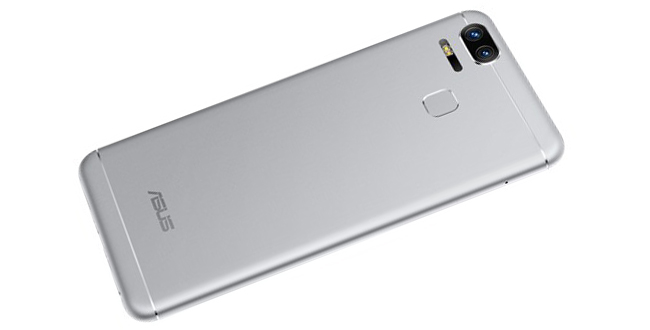
The wide angle camera has a 25mm equivalent focal length that captures a wider field of view but makes objects appear smaller and farther away than they appear to the naked eye. The zoom camera has a 59mm equivalent focal length that makes objects appear slightly larger and closer relative to what your eye sees but has a more restricted field of view. Having a second camera without a wide angle lens is actually very useful in many situations. This approach is similar to what Apple used for the iPhone 7 Plus’ dual camera system.
The wide angle camera uses a 12MP Sony IMX362 Exmor RS sensor with large 1.4µm pixels. It has a six element lens with a large f/1.7 aperture that lets more light reach the sensor, boosting low-light image quality. It also includes OIS and a color spectrum sensor like the ZenFone AR, along with the same hybrid autofocus system that combines dual-pixel phase detection (2PDAF), laser, and contrast based AF. The zoom camera, which has a five element lens array, also uses a 12MP sensor; however, ASUS didn’t provide any further details, so it’s not clear if it also has OIS and the same hybrid AF system. There’s also a 13MP selfie camera that uses the screen for a flash.
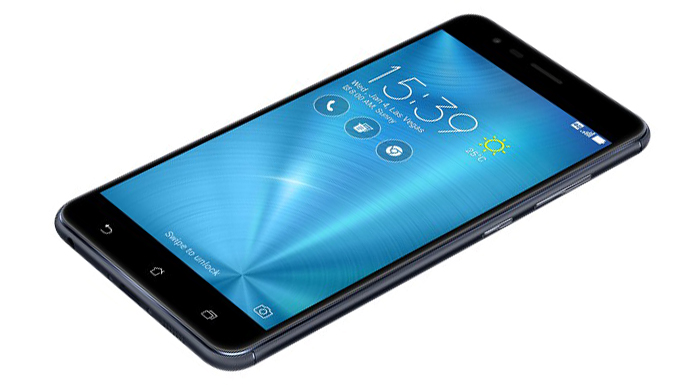
The ZenFone 3 Zoom makes due with a Qualcomm Snapdragon 625 SoC that has an octa-core Cortex-A53 CPU running at up to 2.0GHz. It also has half the amount of RAM as the ZenFone AR, with 3GB or 4GB options available. You can also choose between 32GB, 64GB, or 128GB of internal storage that’s expandable via microSD.
Besides the dual rear camera, the ZenFone 3 Zoom’s other standout feature is its large 5000mAh battery, which, when combined with the Snapdragon 625 and its A53 CPU cores on the 14nm LPP FinFET node, should deliver excellent battery life.
The aluminum uni-body chassis is available in three different colors: Glacier Silver, Navy Black, and Rose Gold. The sides and corners are nicely rounded, similar to the iPhone 7. There’s a color-matching capacitive fingerprint scanner on the back and capacitive navigation buttons on the front below the screen. Gorilla Glass 5 covers the 5.5-inch 1080p SAMOLED display, which ASUS claims reaches a peak brightness of 500 nits.
The ZenFone 3 Zoom will be available in February, while the ZenFone AR will be available in Q2 2017.
More...
Thread Information
Users Browsing this Thread
There are currently 23 users browsing this thread. (0 members and 23 guests)




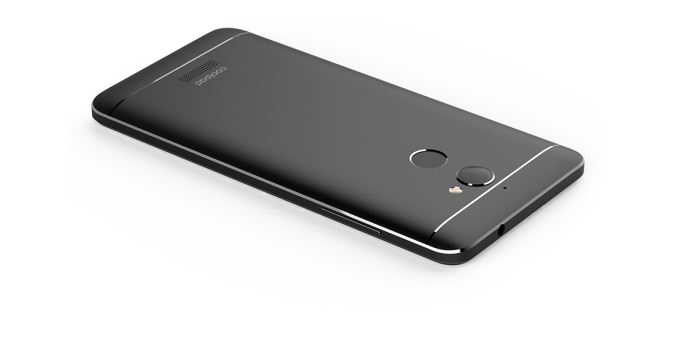

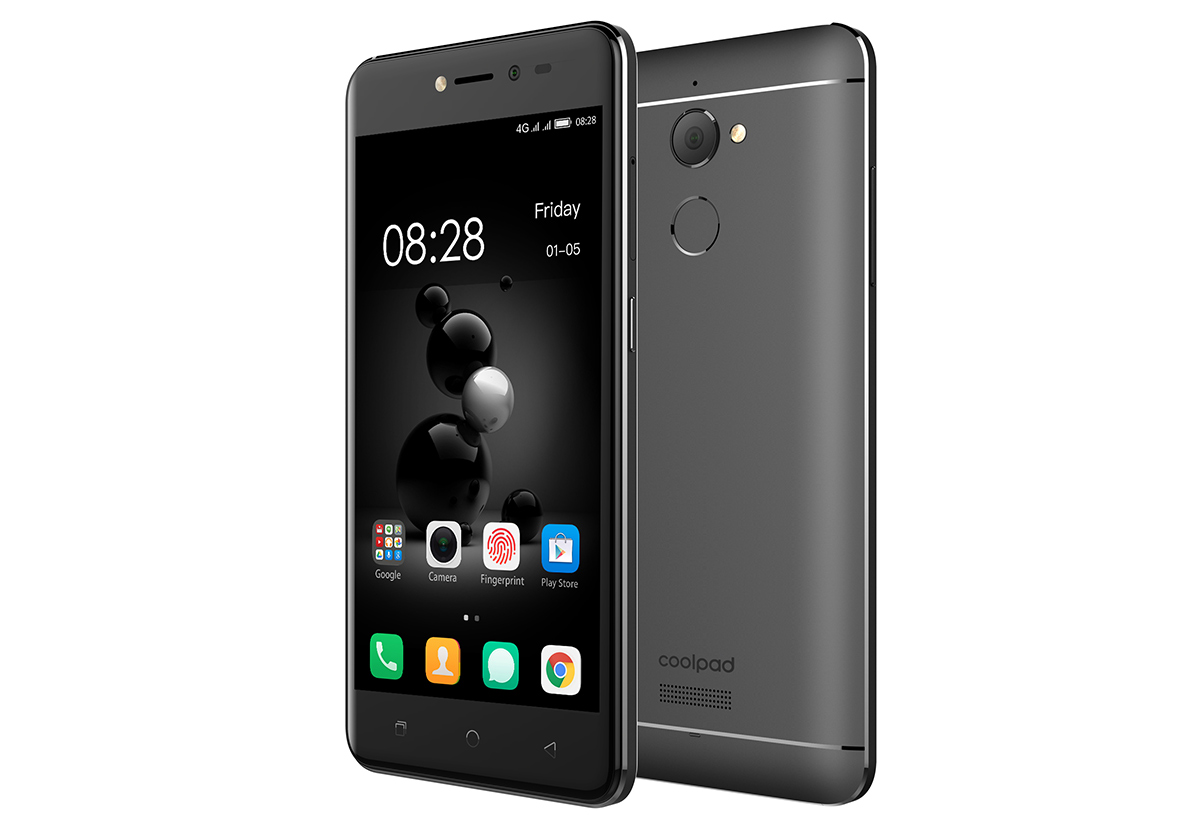

 Quote
Quote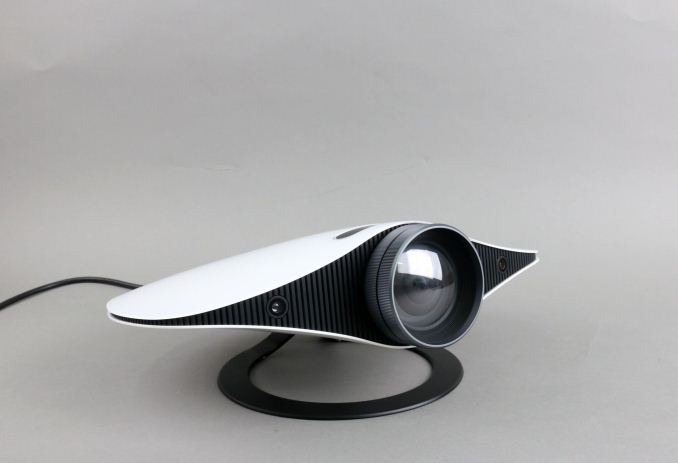





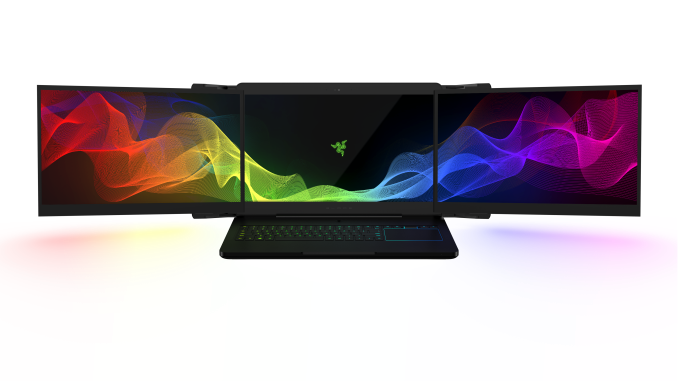
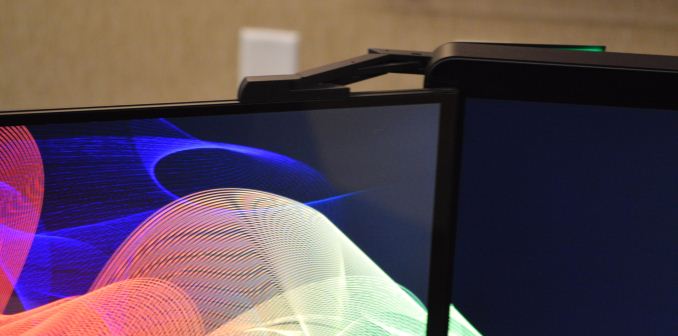
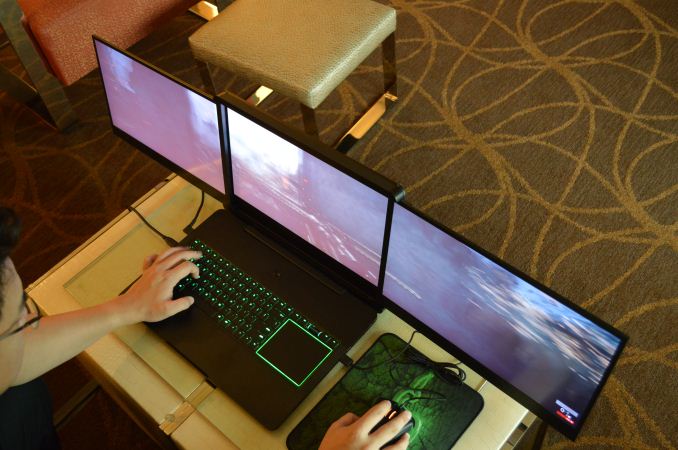
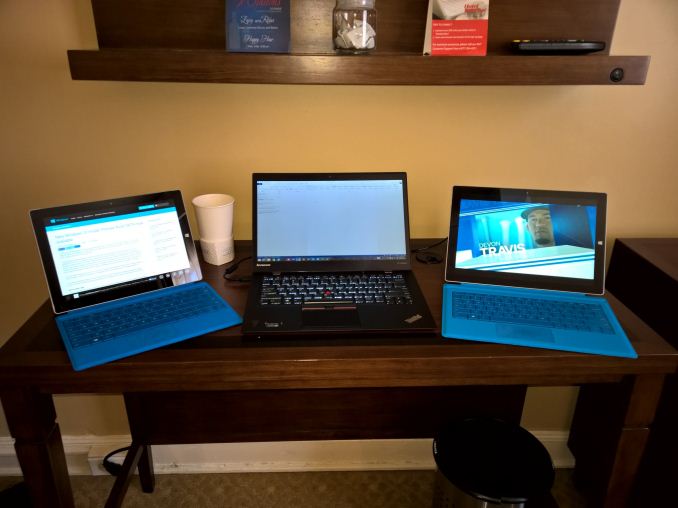





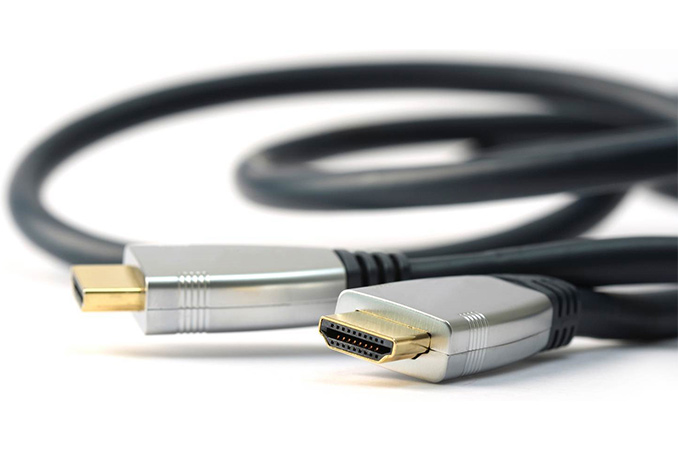
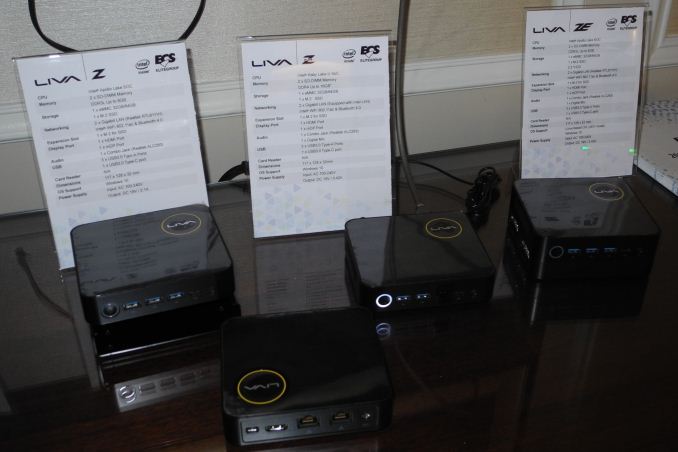






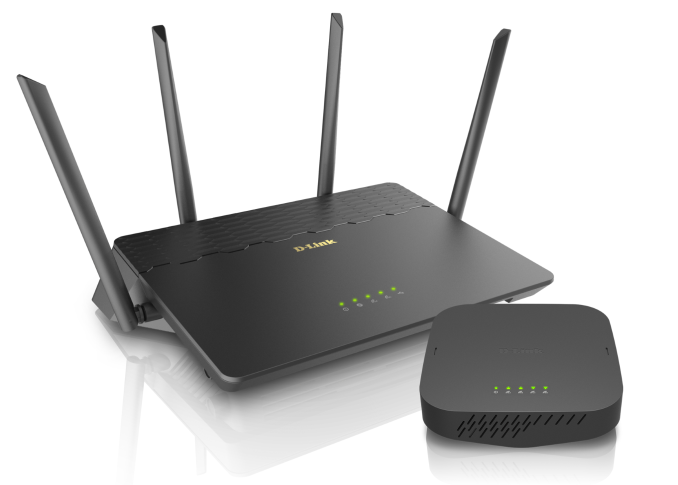
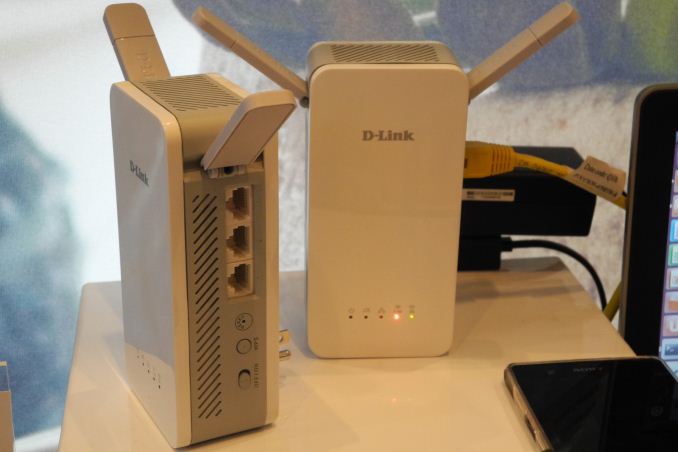


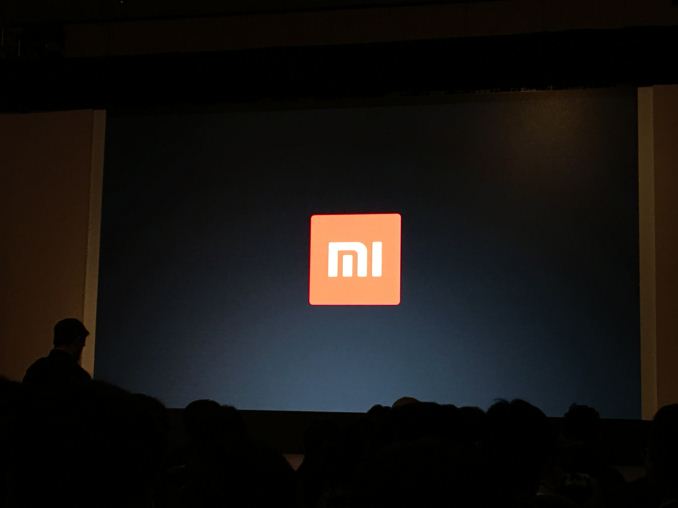






























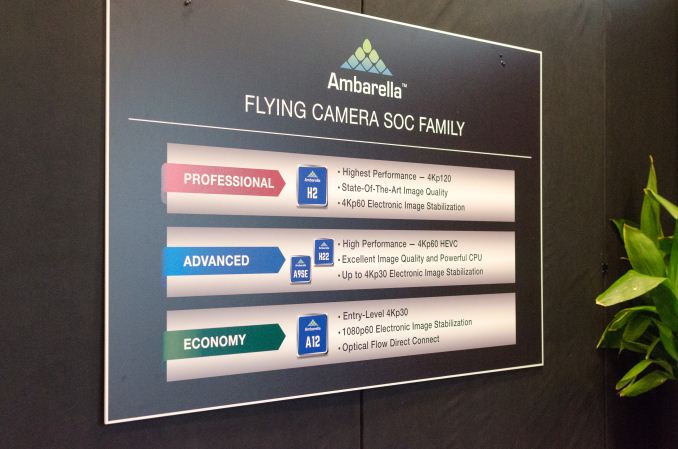

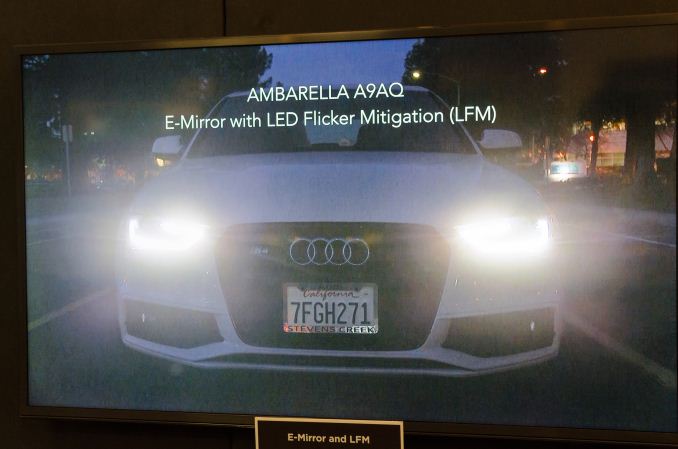
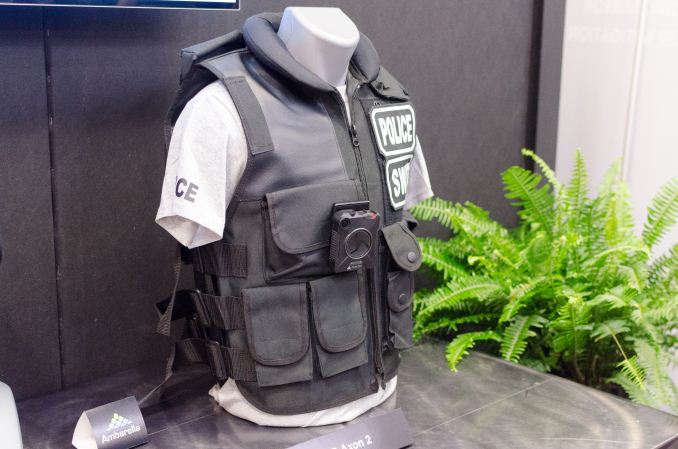
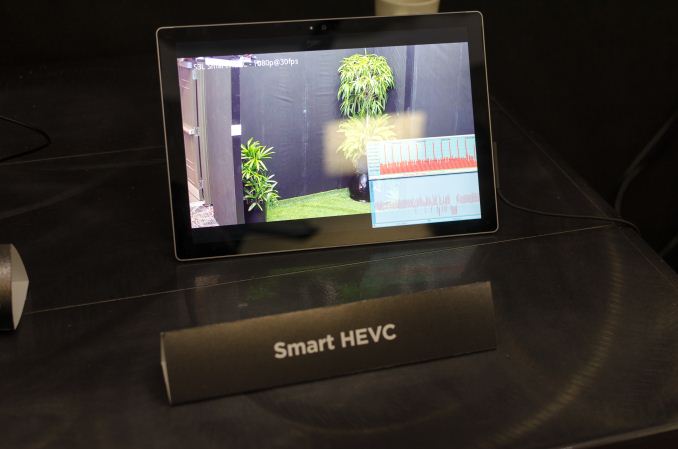
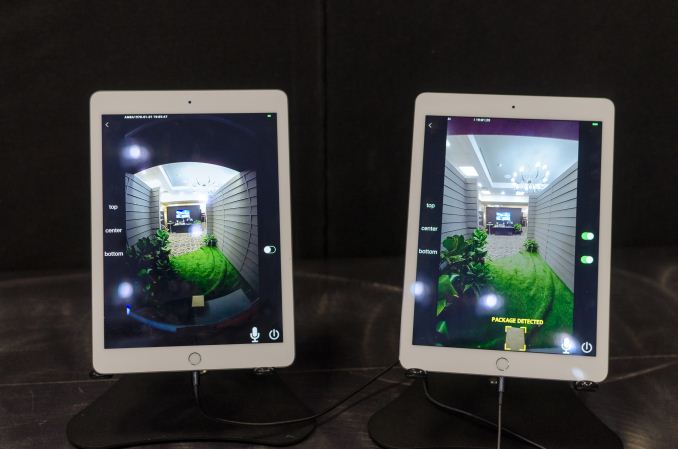

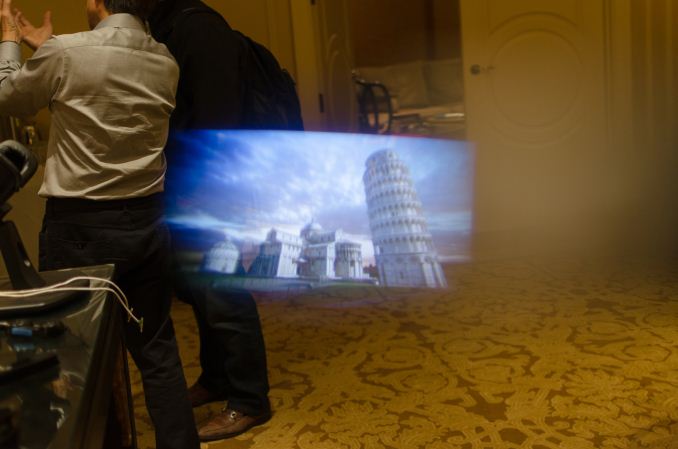

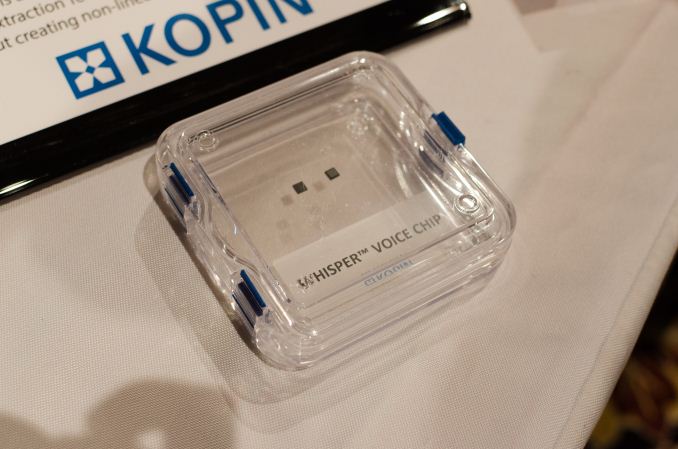
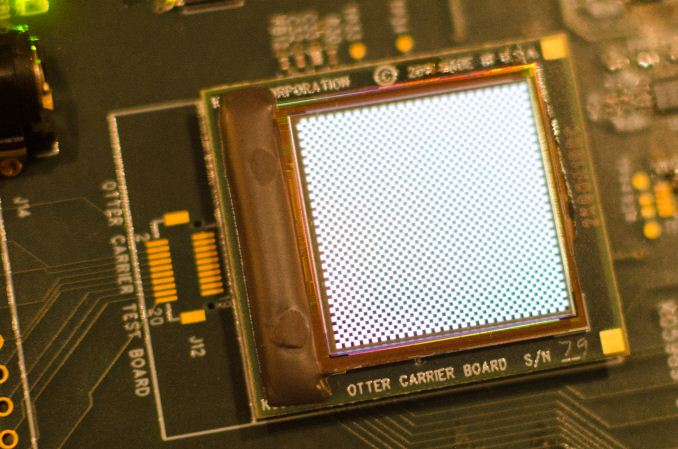
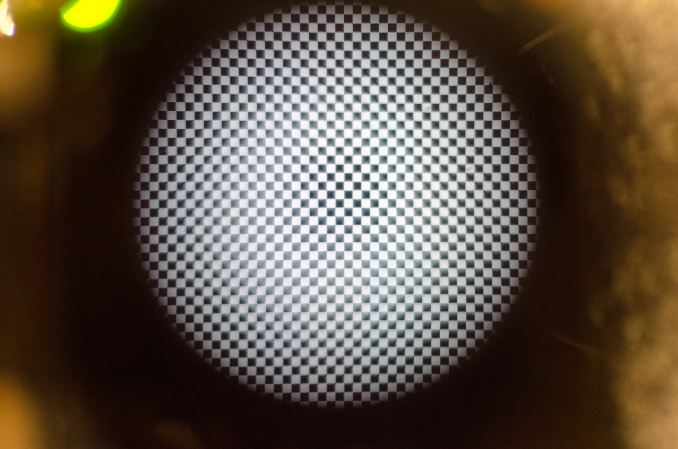
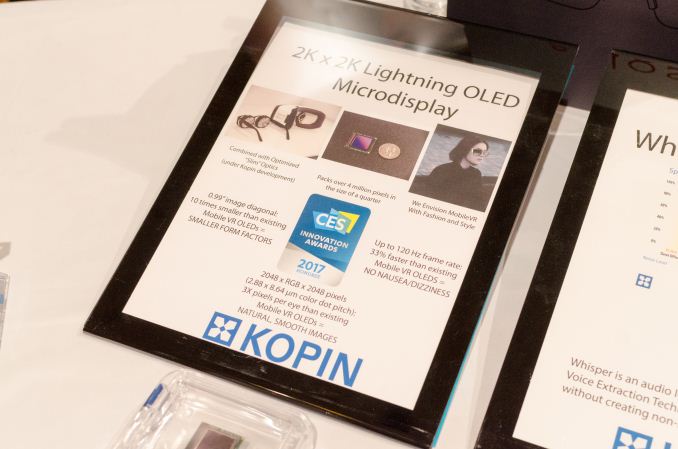
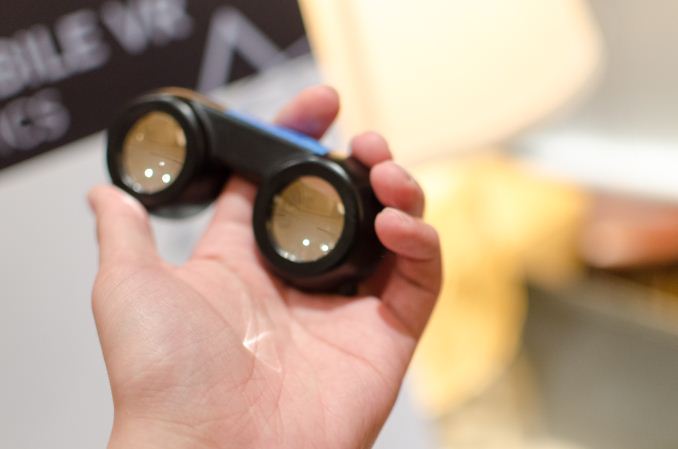
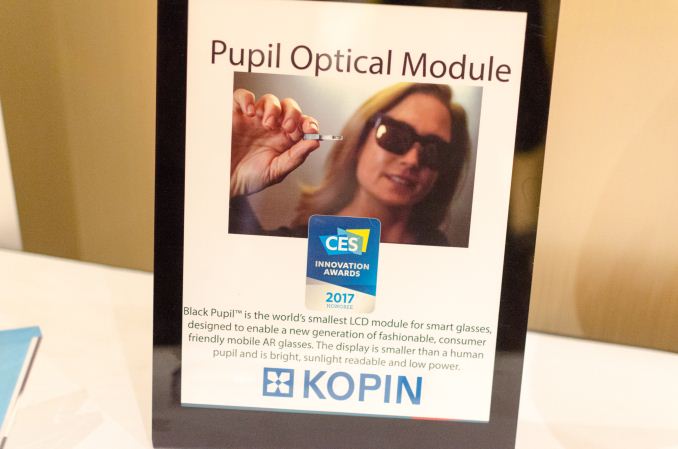
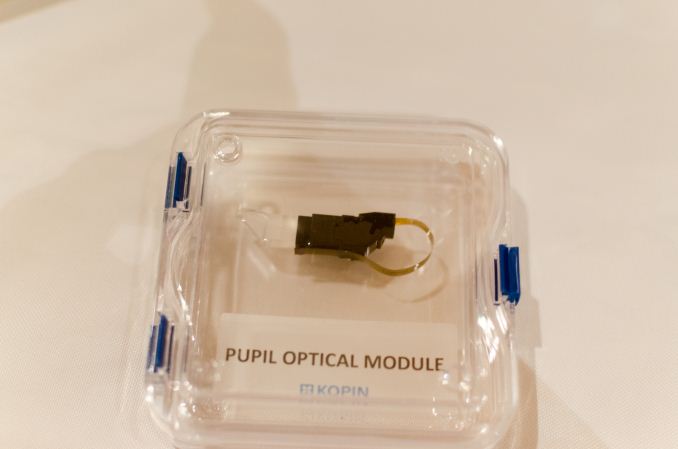
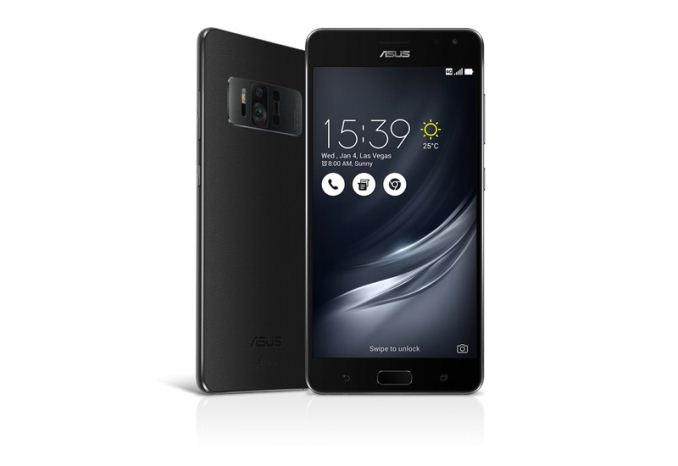
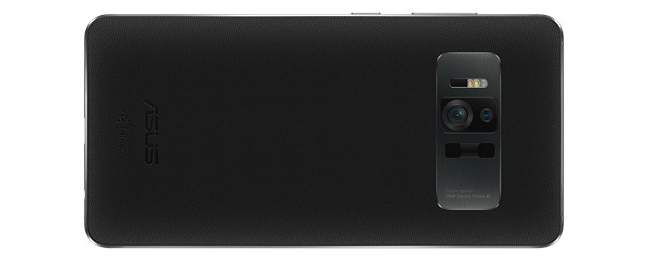
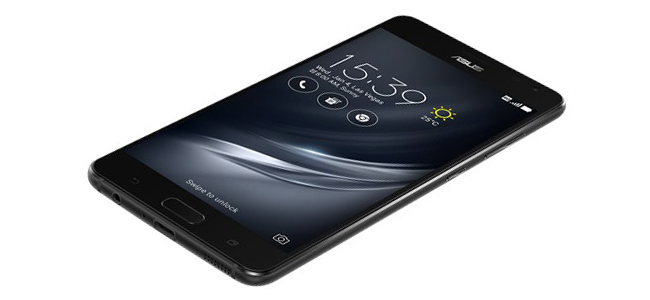

















Bookmarks